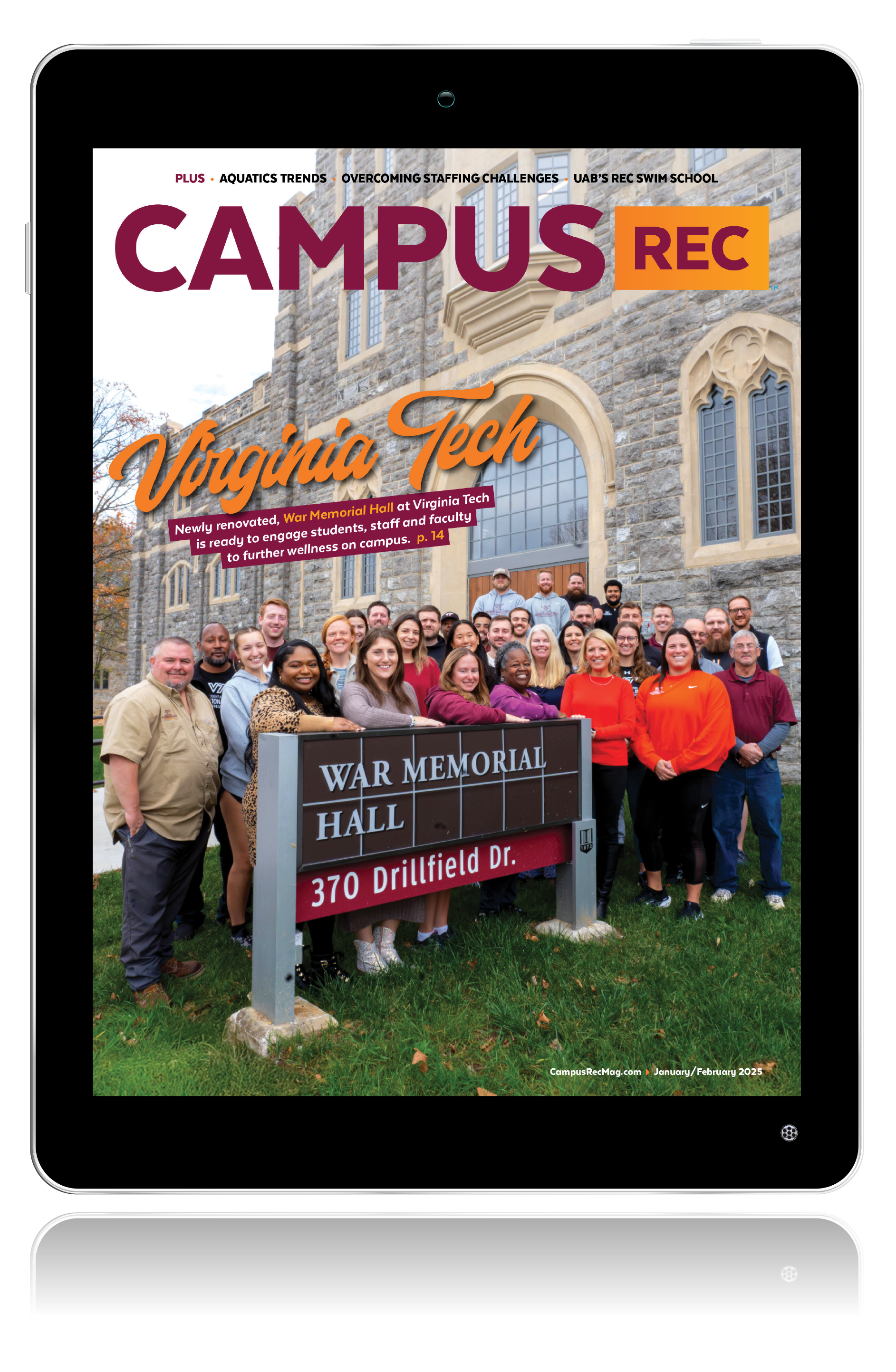Did you know Gen Z is the most diverse generation in modern American history?
The Chronicle of Higher Education states in its executive summary “The New Generation of Students” that 57% of Gen Z is white, 27% is Hispanic and 17% is Black. Compare this to Millennial numbers: 61% white, 23% Hispanic and 16% Black.
Born between 1995 and 2012, this generation is dissimilar in many aspects. And now they’ve been through a pandemic. This means as a whole they require different things from campus recreation.
“We found our students are displaying several characteristics, some positive and some more challenging,” said Mark Williams, the director of RecSports at the University of Notre Dame.
Gen Z’s current defining characteristics include higher feelings of stress and anxiety. Plus, Williams said students were jamming a lot into a year of life and school to make up for lost time over the pandemic. “This is where we come in,” he said. “Hopefully, the collegiate recreational experiences and activities we provide are an asset to them during these times of stress and anxiety.”
EXTRA CREDIT: Here are social strategies to consider when it comes to marketing to Gen Z.
Another thing Williams has noticed is the resilience this generation has. Chris Washington, the assistant director for Open Recreation at the University of North Carolina Charlotte (UNC Charlotte), agreed.
“These past two years, we have seen students essentially lose half — if not all — of their collegiate experiences,” said Washington. “What I have really appreciated from my students is they have not quit. It has brought out their creative juices at times to figure out ways to recreate and enjoy time when it is available.”
Passion for sport clubs is something Liz Forman has seen. As the assistant director for sport clubs at UNC Charlotte, she noted students this past year wanted to dedicate themselves to a hobby or activity with structure. This is stemming from a desire to meet social needs and have fun in competition.
Silvia Chan, the senior associate director at the University of Connecticut, shared they’ve seen three key characteristics of Gen Z this past year: demanding of services, challenging of authority and awareness of fitness trends.
EXTRA CREDIT: Steve Bobbitt of James Madison University shares advice on Gen Z.
But the best way they’ve found to serve students is to listen. “We have established a student advisory board,” said Chan. “We make our pro-staff available to inquiries.”
Forman, Washington and Williams gave several other ways they have found to best serve students this past academic year:
- Provide educational workshops. “Give them learning opportunities and provide clear instruction both with virtual learning and in-person,” said Forman.
- Reward them. “We have had employee-only events where they play dodgeball, volleyball and other activities to help them alleviate stress from work and just enjoy their time,” said Washington. “If you want them to buy in, you have to treat them as an essential part of the experience we provide.”
- Talk to students. Hold them accountable and help them understand how to best use their sought-after autonomy. “Being flexible and showing vulnerability when working with students goes a long way,” said Williams.
All in all, Gen Z is different than the students you have served for years. How are you pivoting to serve them well as the 2022-2023 academic year approaches?










